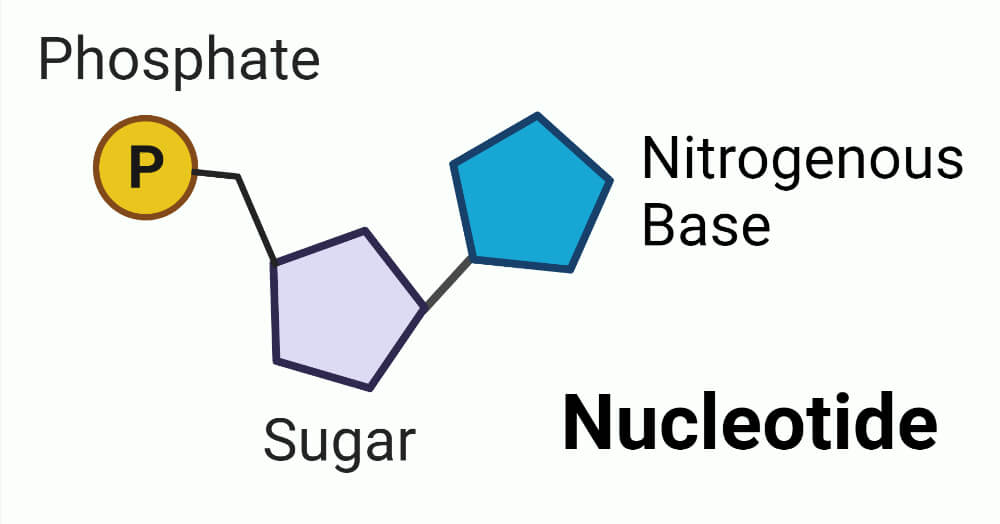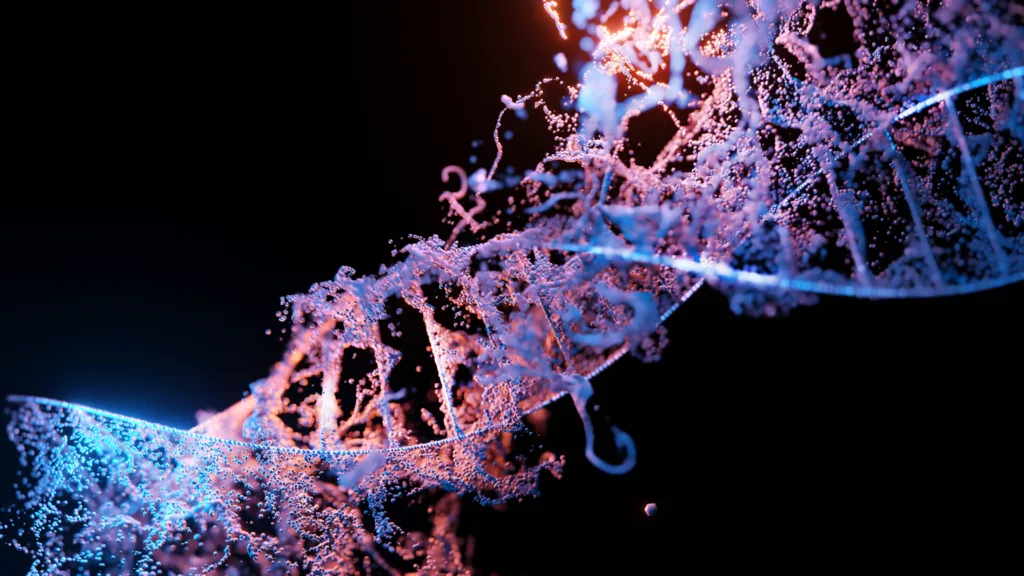The building blocks of DNA and RNA are nucleotides. These small molecules are composed of a nitrogenous base, a sugar molecule, and a phosphate group. The four nitrogenous bases found in nucleotides are adenine, guanine, cytosine, and thymine in DNA and uracil in RNA. The sugar molecule is a pentose sugar, either deoxyribose in DNA or ribose in RNA. The phosphate group consists of a phosphorus atom bonded to four oxygen atoms.
The genetic code is the set of rules by which information encoded in DNA or RNA is translated into proteins. It is a triplet code, meaning that each amino acid is represented by a sequence of three nucleotides. These three nucleotides form a codon, and there are a total of 64 posible codons. Of these 64 codons, 61 code for amino acids, while the remaining three are stop codons that signal the end of protein synthesis.
The relationship between codons and amino acids is determined by the genetic code. For example, the codon AUG codes for the amino acid methionine, while the codon UUU codes for the amino acid phenylalanine. The genetic code is universal, meaning that it is the same for all organisms, from bacteria to humans.
The minimum number of nucleotides per codon needed to encode 20 amino acids is three. This is because there are only four different nucleotides, and three nucleotides can therefore produce a total of 64 different combinations. This provides enough codons to code for all 20 amino acids, as well as the three stop codons.
Nucleotides are the building blocks of DNA and RNA, consisting of a nitrogenous base, a sugar molecule, and a phosphate group. The genetic code is a triplet code, with each amino acid represented by a sequence of three nucleotides that form a codon. There are a total of 64 possible codons, of which 61 code for amino acids and three are stop codons. The minimum number of nucleotides per codon needed to encode 20 amino acids is three.
Number of Nucleotides in Three Codons
Three codons are made up of a total of nine nucleotides. A codon is a sequence of three nucleotides in mRNA that codes for a specific amino acid during protein synthesis. The four nucleotides found in mRNA are adenine (A), uracil (U), guanine (G), and cytosine (C). Since tere are three positions in a codon and four possible nucleotides for each position, there are 4 x 4 x 4 = 64 different combinations of codons possible. Each of these codons specifies a different amino acid or a stop signal. Therefore, three codons comprise of nine nucleotides, and they can code for three different amino acids or a stop signal.

The Necessity of Three Nucleotides for a Codon
The genetic code is the set of rules by which DNA or RNA sequences are translated into proteins. The genetic code is universal, meaning that it is the same for all living organisms on Earth. The genetic code is composed of codons, which are sequences of three nucleotides that specify the amino acid sequence of a protein. Each codon codes for a specific amino acid, and there are 20 differet amino acids that are used to build proteins.
There are several reasons why three nucleotides are required for a codon. First, the four nucleotides that make up DNA (adenine, guanine, cytosine, and thymine) can be combined in 64 different ways to form codons. This is more than enough to code for the 20 amino acids that are used to build proteins.
Second, using three nucleotides per codon provides redundancy in the genetic code. Because there are 64 possible codons, but only 20 amino acids, some amino acids are coded for by more than one codon. For example, the amino acid leucine is coded for by six different codons: UUA, UUG, CUU, CUC, CUA, and CUG. This redundancy allows for some errors in the genetic code to be corrected without affecting the final protein product.
Using three nucleotides per codon allows for efficient translation of the genetic code. Each codon can be read and translated by the ribosome in a single step, which speeds up the process of protein synthesis.
The use of three nucleotides per codon is necessary to code for the 20 different amino acids used to build proteins, provides redundancy in the genetic code, and allows for efficient translation of the genetic code.
Number of Nucleotides in an Amino Acid
The process of protein synthesis involves the translation of the genetic code, encoded in the DNA, into a sequence of amino acids that make up the protein. The genetic code is read in sets of three nucleotides, known as codons. Each codon specifies a particular amino acid to be incorporated into the growing polypeptide chain.
There are a total of 20 amino acids that can be incorporated into proteins, each with a unique chemical structure and properties. To form a polypeptide chain, the correct sequence of amino acids must be secified by the codons in the mRNA molecule.
So, to answer the question, each amino acid is determined by a sequence of three nucleotides in the genetic code. Thus, three nucleotides make up one amino acid. This sequence of three nucleotides is also known as a codon. the genetic code is read in sets of three nucleotides, and each codon specifies a particular amino acid to be incorporated into the growing protein chain.
How Many Nucleotides Make Up a Codon?
A codon is a sequence of three nucleotides that forms a unit of genetic code in DNA or RNA. It is the basic unit of the genetic code, and each codon corresponds to a specific amino acid. The genetic code is made up of 64 possile codons, each of which codes for a specific amino acid or stop signal.
Therefore, it can be inferred that a codon is made up of three nucleotides. This is because there are four types of nucleotides that make up DNA (adenine, guanine, cytosine, and thymine) and RNA (adenine, guanine, cytosine, and uracil). With four possible nucleotides, there are 64 possible combinations of three nucleotides, which is exactly the number of codons in the genetic code.
A codon is made up of three nucleotides that form a unit of genetic code in DNA or RNA.

Conclusion
Nucleotides are the building blocks of DNA and RNA, and are essential for the storage and transmission of genetic information. These small molecules are made up of a sugar, a phosphate group, and a nitrogenous base, and can be combined in various ways to form the genetic code that determines the traits of living organisms. The discovery of the triplet code, which assigns specific amino acids to groups of three nucleotides, has revolutionized our understanding of genetics and paved the way for advancements in fields such as medicine and biotechnology. By studying nucleotides and ther functions, researchers can gain valuable insights into the workings of cells and organisms, and develop new treatments and technologies that could have a profound impact on our health and well-being.
